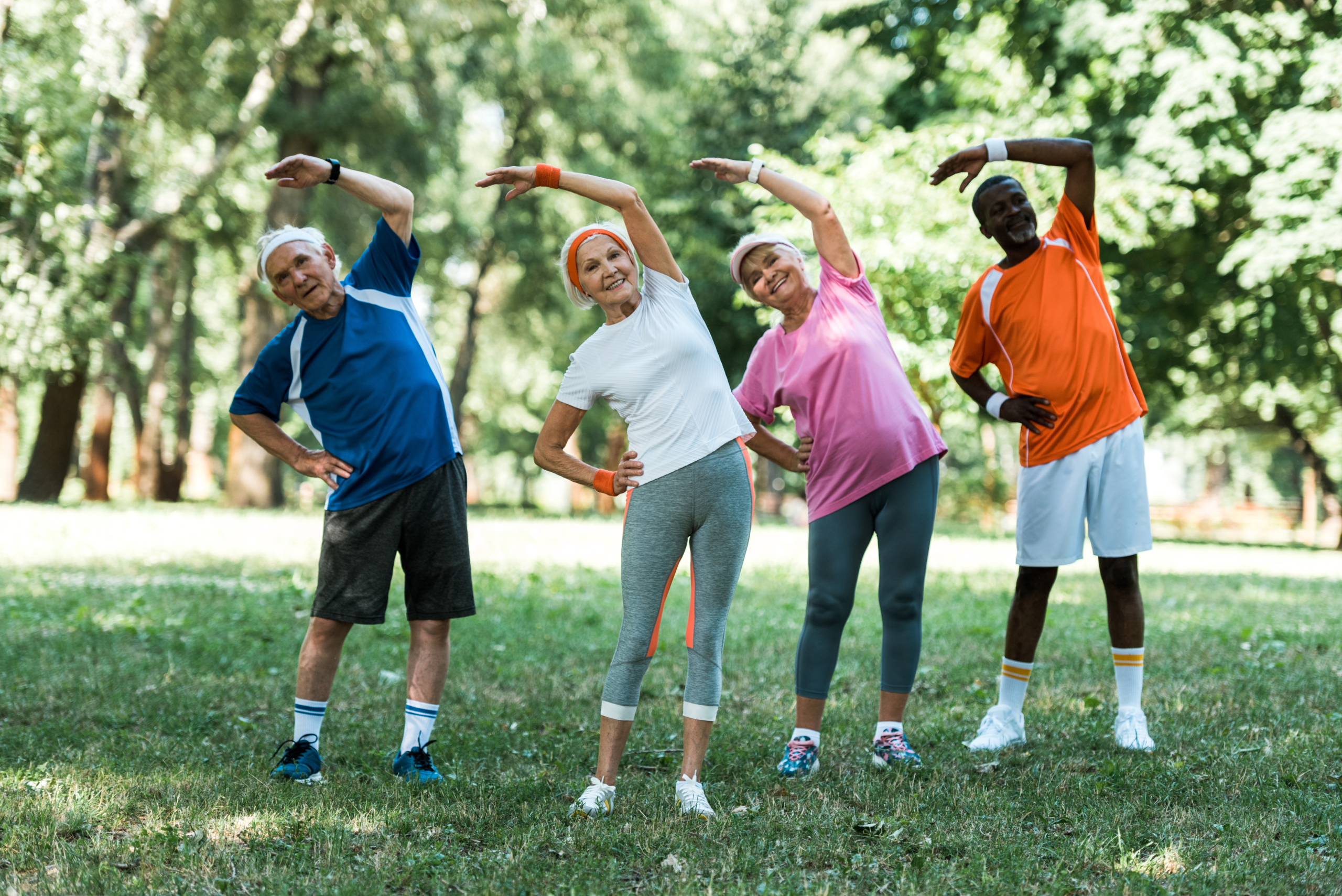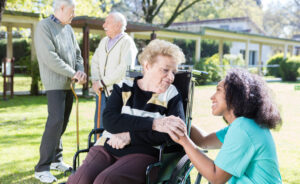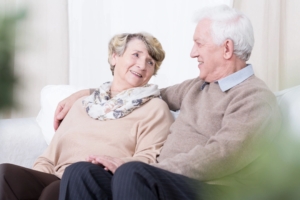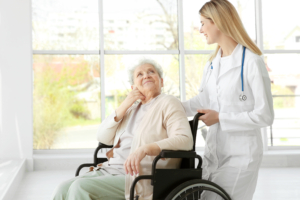As we age, our bodies go through many changes, and it’s important to keep moving as we get older. Aging gracefully is something that everyone wants to achieve, but in reality, it is not easy to do so. Baby boomers, in particular, often struggle with managing their health as they age, but incorporating exercise into their daily routine can make a significant difference. We need to pay attention to our health more than ever. One of the best things we can do for our bodies is to exercise regularly.
Exercise helps us maintain our health and independence, improves our mood, and reduces the risk of chronic diseases that can make aging more difficult. Before choosing a new fitness or exercise program, please check in with your doctor or medical provider to make sure what you would like to do would be acceptable taking into consideration your current health conditions. Always make sure you do a little walking or stretching to warm up before exercising to reduce the risk of injury.
In this blog post, we’ll explore the benefits of exercise for aging adults and give tips on how baby boomers can age gracefully with exercise. We will cover tips on what are the best types of exercise to keep you healthy as well as tips on how to be consistent with your exercise habits. Let’s get started.
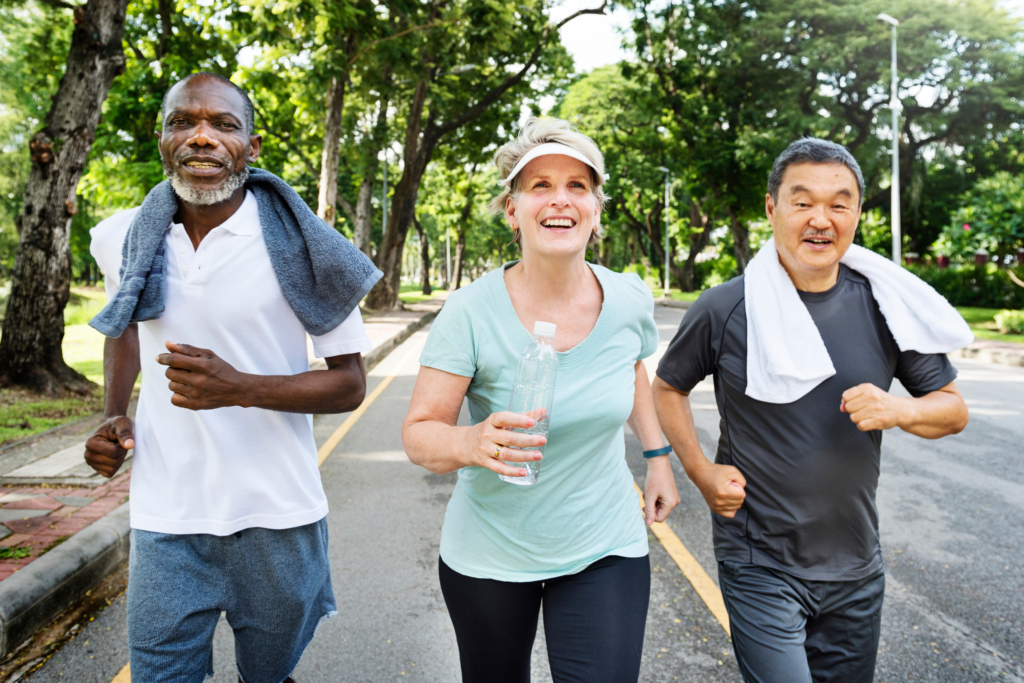
Benefits
1. Exercise reduces the risk of chronic diseases.
It is a well-known fact that baby boomers are prone to developing chronic diseases such as arthritis, diabetes, high blood pressure, and heart disease. Exercise has been shown to reduce the risk of developing these diseases significantly. Regular exercise can help to improve blood pressure and blood sugar levels, strengthen the heart muscle, and improve bone density. Therefore, baby boomers who exercise regularly can reduce their risk of chronic diseases and stay healthy.
As we age, our bodies become more susceptible to health issues such as heart disease, diabetes, and joint pain. However, regular exercise can help to reduce these risks by improving cardiovascular health, regulating blood sugar levels, and improving joint flexibility and mobility. Not only can exercise help to prevent these health issues, but it can also improve overall quality of life by reducing the risk of depression and cognitive decline.
Remember to keep safety in mind. Have fluids handy such as a water bottle. Use safety equipment when needed such as a bicycle helmet, dress properly for the weather and consider dressing in layers to allow for adjustments and please listen to your body for clues that you may be overdoing it. We want to improve health, not make anything worse!
2. Exercise helps maintain muscle mass and strength.
As we age, our muscles tend to weaken, and we lose muscle mass. However, regular exercise can help to build and maintain muscle mass and strength. Strength training exercises such as weightlifting, resistance training, and bodyweight exercises are particularly effective in maintaining muscle mass and strength. By doing these exercises, baby boomers can improve their physical function, reduce the risk of falls and injuries, and maintain their independence. It only takes 48 hours of non-routine activity for your muscles to start to weaken. You can get so weak that it may be difficult to get out of bed, get off the couch or get out of the chair. The longer you go without activity the worse it will get. Truly, this saying is correct “Use it or Lose it.”
3. Exercise improves cognitive function
Exercise is not only beneficial for physical health but also for mental health. Regular exercise has been shown to improve cognitive function and reduce the risk of developing dementia and Alzheimer’s disease. Exercise helps to promote the growth of new brain cells and improves blood flow to the brain. As a result, baby boomers who exercise regularly can improve their memory, attention, and decision-making skills.
In addition to physical benefits, exercise can also have mental health benefits for baby boomers. Exercise has been shown to reduce stress, anxiety, and depression, which are common issues among older adults. Exercise can also improve cognitive function by increasing blood flow to the brain and promoting the growth of new brain cells. This can help to prevent cognitive decline and improve overall brain health.
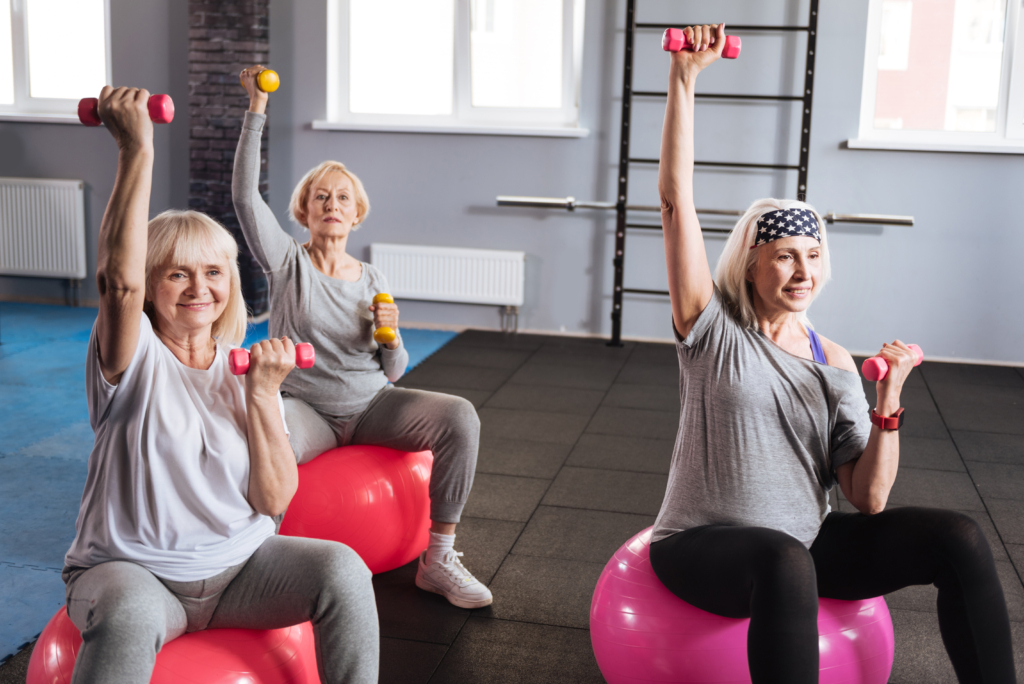
4. Exercise promotes social interaction
Especially since the pandemic, social isolation has been a significant issue for many baby boomers, and it can lead to depression and other mental health problems. Exercise is an excellent way to promote social interaction and reduce social isolation. Joining exercise classes or groups can help baby boomers to meet new people, make friends, and improve their social networks. In addition, exercising with others can provide motivation and support, making it easier to stick to an exercise routine.
5. Maintain a healthy weight
As we age, our metabolism slows down, making it easier to gain weight and harder to lose it. However, regular exercise can help to boost metabolism, burn calories, and build muscle mass, which can help to maintain a healthy weight. This, in turn, can reduce the risk of obesity-related health issues such as heart disease and diabetes.
Exercise uses up the sugar (glucose) for energy in our muscles and helps to regulate our blood sugars.
6. Exercise improves sleep quality
Sleep problems are common among baby boomers, and they can affect physical and mental health. Exercise has been shown to improve sleep quality and reduce the risk of sleep disorders. Regular exercise can help to regulate the sleep-wake cycle, increase the amount of deep sleep, and reduce the time it takes to fall asleep. As a result, baby boomers who exercise regularly can improve their sleep quality and wake up feeling more refreshed and alert.efits of Exercise as we Age:
So, what types of exercise are best for baby boomers?
It’s important to choose exercises that are low-impact and gentle on the joints. Some great options include walking, swimming, yoga, and cycling. These exercises are easy on the joints but still provide a great workout. It’s also important to start slowly and gradually increase the intensity and duration of exercise over time.
4 Types of Exercise That Are Beneficial as we Age.
The goal is to work up to 150 minutes per week. As we age, we are trying to maintain the best quality of life that we can. Our inability to complete the simple daily activities of living such as climbing stairs, bathing ourselves, preparing meals, grocery shopping, or even tying our shoes can cause us to feel inadequate and have feelings of hopelessness as we age. This would not be aging gracefully for us. I love the following quote by Hunter S. Thompson, “Life should not be a journey to the grave with the intention of arriving safely in a pretty and well-preserved body, but rather to skid in broadside in a cloud of smoke, thoroughly used up, totally worn out, and loudly proclaiming “Wow! What a Ride!”
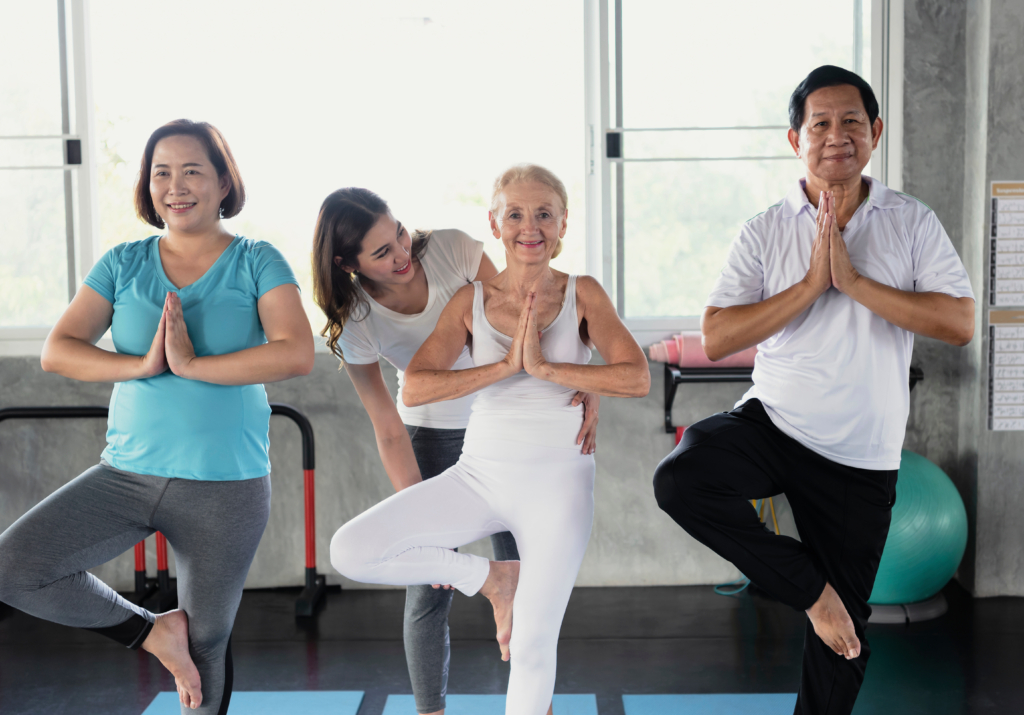
- Balance
“Walking the Line.” Walking heel to toe, one foot in front of the other can help improve balance.
This could be something as simple as practicing standing on one foot. Sounds simple enough but as we age our balance declines. Balance just isn’t as good as when we were younger. Keeping your balance tuned up can help to prevent and reduce the risk of falling.
Consider Physical therapy or a senior exercise class for specific exercises to meet your needs.
- Strength Training
As we age, our muscles naturally weaken. Strength training can help combat this and improve muscle tone and strength. Focus on exercises that target major muscle groups, such as pushups, squats, and lunges. Incorporate resistance bands, dumbbells, or weight machines to add resistance and challenge yourself.
- A popular method of strength training is using resistance bands. They are very inexpensive and have different strengths based on your ability. Consider looking for a senior exercise class in your area or for our tech savvy seniors, there are many YouTube videos that you can look for and possibly some DVDs yet available with some pre-recorded workouts you can watch and participate in.
- You can use canned goods for weights or hand weights. You don’t need to get fancy. Strength training will also keep you fit to be able to carry your groceries as needed as well.
- If you are unsure where to get started or what you should do ask your doctor if it would be appropriate to have a few sessions with Physical Therapy to get you started. This can be done as an outpatient. For those recovering from an illness or hospitalization, ask the doctor about “in-home” therapy to work on getting your strength back. Medicare does cover Home Health 100% for those that qualify.
- Flexibility
- One of my favorite exercises for flexibility and balance is chair yoga. You get all the benefits of yoga, quieting your mind, stretching and flexibility, improving your balance without having to get on the floor. You are either sitting in the chair or standing holding on to the chair for balance as you go through the exercises. We have included a Free Chair Yoga Session with one of our healthcare professionals to give you an example of how chair yoga can benefit you.
- Physical therapy or a senior exercise class can help you with more choices tailored to your needs.
- Endurance-Now is not the time to jump right in with going all out for endurance. Check with your doctor and start slowly.
- Brisk walking or jogging
- Yard work and gardening (mowing, raking)
- Dancing
- Swimming
- Biking
- Climbing stairs or hills
- Playing tennis or golf (walking) or even basketball
4 Tips to Stay Consistent and Not Give Up!
1. Start Slow and Build Up
For baby boomers who may be out of shape or have health conditions that make exercise challenging, it’s important to start slow and build up gradually. Start with simple exercises such as gentle stretching, walking, or swimming. These exercises can help improve flexibility and muscle strength. Gradually increase your exercise routine as your body gets stronger and you get more comfortable.
Get into a routine. Walking the dog 1-2x per day would be perfect. Maybe meet your friends at the dog park and make is a social event. Take a walk and then visit while the dogs play at their park.
If life gets in the way no worries. Just get started back up when you can. Things happen and that’s ok.
Make sure you keep track of your exercise and progress. This will help you stick to a regular exercise program as you see the consistency and feel the results.
2. Involve Friends and Family
Make exercising social! Exercising with friends and family can be a great way to stay motivated and make exercise more enjoyable. Join a fitness class, participate in team sports, or simply take walks together. Having a support system can help you stick to your exercise routine and make it more of a social activity. Make if fun and easy. Are you willing to try something new? Do an early morning activity and then have a coffee/tea/breakfast social hour afterwards. If you live in a rural area maybe meet in “town” go for a walk and then socialize at the local restaurant or café. If others are showing up you are more likely to show up too and not disappoint your friends.
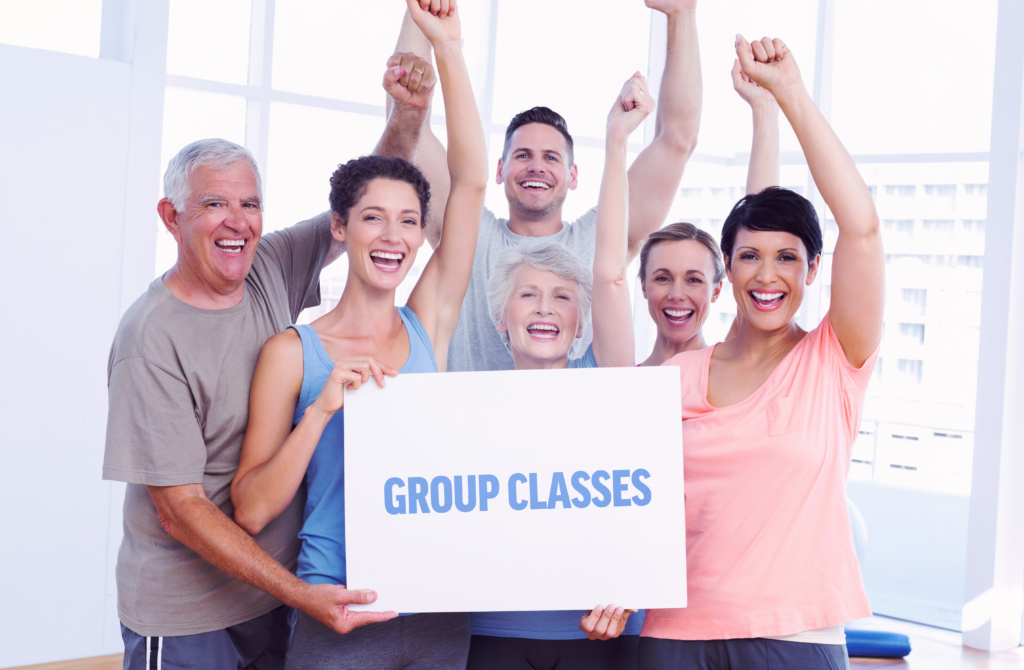
3. Embrace Variety
It’s important to mix up your exercise routine and engage in a variety of activities. This can help prevent boredom and engage different muscle groups. Try different workouts such as yoga, Pilates, or strength training. Mix in low-impact exercises such as cycling or swimming. This will keep your body challenged and help improve your overall fitness.
4. Listen to Your Body
Remember to always listen to your body and rest when you need it. Do not push yourself too hard and pay attention to any pain or discomfort. If you have a health condition or are unsure about what exercises are safe for your body, talk to your healthcare provider.
Endurance activities should not cause dizziness, chest pain or pressure, or a feeling like heartburn.
When you are exercising, pay attention to your breathing. If you feel like you are getting a good workout and can still carry on a conversation you are doing ok. Pay attention if you are out of breath and can’t speak in sentences. We are in our mid-60s. We like walking on the treadmill especially in the wintertime when we can’t get outside. We are in Wisconsin and winters can get brutal. We love to listen to music while walking. It motivates us and makes the work a bit lighter. With that in mind singing can be heard throughout the house when on the treadmill. When it comes to increasing the walking speed or incline on the treadmill, if I can’t sing the song anymore, I know I am going a bit too much. Have fun but listen to your body.
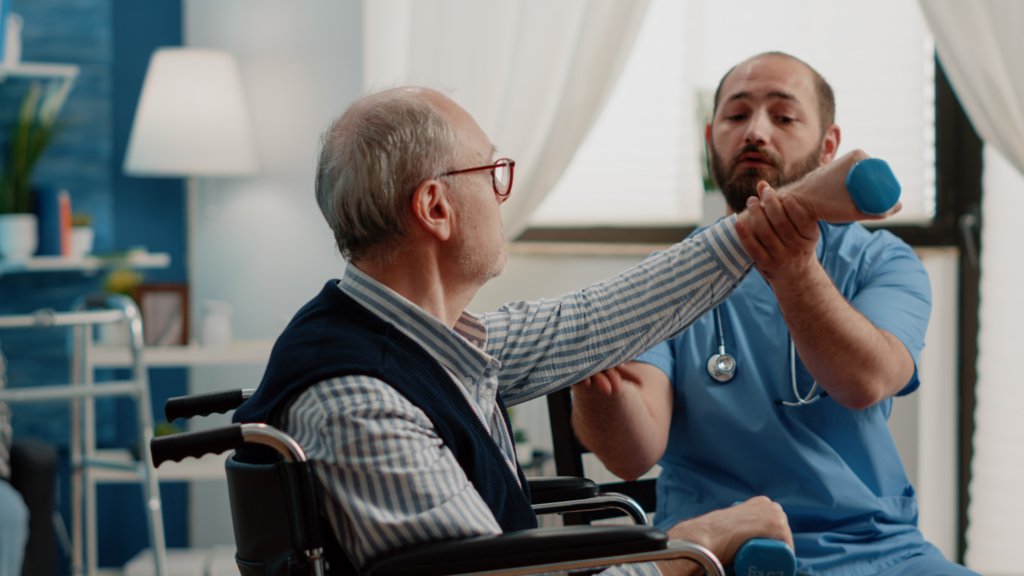
Exercising with Chronic Conditions:
Anyone with a chronic disease should be able to participate in exercising. This is a good time to check with your healthcare professional to determine what would be the best types of exercise for your condition. There are programs available for different types of conditions. There is Pulmonary Rehab for those with lung diseases, there is Cardiac Rehab for heart conditions, we have healthcare professionals that offer exercise coaching for Parkinson’s Disease, Rheumatoid Arthritis, and many other chronic conditions even dementia. Everyone can participate in exercise to help promote their best quality of life.
Conclusion:
Maintaining strength and balance is important to reduce the risk of falls. Overall, exercise is an important part of aging gracefully for baby boomers. This is possible with regular exercise. By starting slow, involving friends and family, embracing variety, prioritizing strength training, and listening to your body – you can maintain your health and independence for years to come. Baby boomers who exercise regularly can reduce their risk of chronic diseases, maintain muscle mass and strength, improve their cognitive function, promote social interaction, and improve their sleep quality. Therefore, if you are a baby boomer, start incorporating exercise into your daily routine today.
Remember, it is never too late to start exercising, and the benefits are worth it. Remember, exercise is not just about maintaining physical health, but also about improving mental health and overall wellbeing. So, if you’re a baby boomer looking to age gracefully, consider adding some exercise to your daily routine. Your body (and mind) will thank you! Let’s embrace the aging process with grace and a healthy dose of exercise.
Take care and we hope to see you back here soon. Don’t hesitate to leave us a comment or suggest topics that are of interest to you. To stay on top of aging topics including support for adult children of aging parents consider joining our free private forum for discussions, tips, videos, checklists, and so much more to help with the journey of caregiving or aging gracefully.
Resources:
Patient Advocate Match-Health Professionals Resource Directory
Your Nurse Advocate Consulting
https://www.nia.nih.gov/health/infographics/four-types-exercise-and-physical-activity
https://www.nia.nih.gov/health/infographics/5-tips-help-you-stay-motivated-exercise
https://www.cdc.gov/physicalactivity/basics/older_adults/index.htm
https://www.nia.nih.gov/exercise-toolkit
https://www.nia.nih.gov/health/exercising-chronic-conditions

